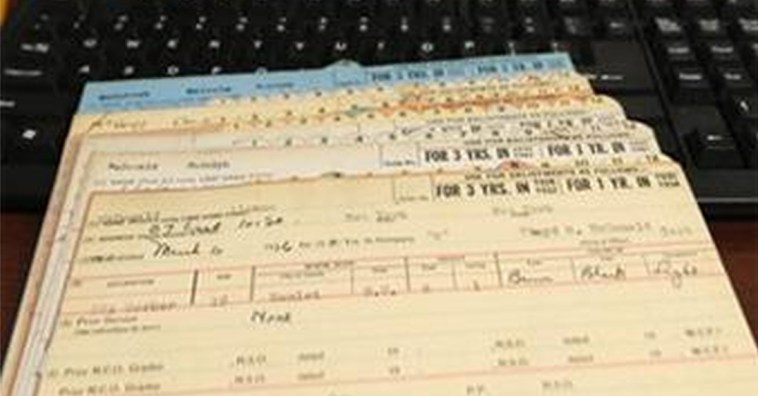SARATOGA SPRINGS, N.Y. (AP) — Air Force retiree Greta Hamilton was familiar with the Harlem Hellfighters, a storied all-black infantry regiment that won fame on the World War I battlefields of France only to be virtually shunned by the U.S. military back home.
Videos By Rare
But it wasn’t until she volunteered to help the New York State Military Museum digitize the unit’s post-WWI records that she came to know the soldiers better: what they did for a living, where they were born, when they enlisted and for how long.
She and other volunteers have recorded the data from about a quarter of the approximately 10,000 personnel cards of the Harlem Hellfighters for a database that has been posted on the New York Heritage and military museum websites. A$2,500 grant from the Capital District Library Council is helping pay for the project.
“It’s phenomenal,” said Hamilton, a retired Air Force major and director of the Marion National Cemetery in Illinois. “It a part of our history that needs to be told.”
Several years ago, thousands of National Guard documents known as regimental personnel cards were found in a filing cabinet at the Harlem Armory by then-museum director Michael Aikey. The cards are from 1921 to 1949 and include names, ages, addresses, birthplaces, occupations and enlistment dates.
The online information is a vital resource for anyone tracing their genealogy through an ancestor who served in the 369th from the early 1920s through the 1940s, said James Gandy, the museum librarian who’s leading the project.
The regiment was formed before the war as the National Guard’s 15th Infantry, based in Manhattan. Activated to serve in the segregated U.S. Army during WWI, the regiment was designated the 369th Regiment and sent to France, where it served alongside French troops. It was one of the few black units to see combat in Europe, where the regiment earned its nickname and some of its soldiers were awarded France’s high military honors, including Henry Johnson, a rail station porter from Albany.
Upon returning to the U.S., his heroics and those of his comrades were ignored by the military establishment during the Jim Crow era of racial segregation. A decadeslong effort to get a posthumous Medal of Honor awarded to Johnson received a boost in September when the U.S. Senate approved legislation that would pave the way for the decoration. The bill awaits action in the House. If approved, it will next go to the president’s desk for final consideration.
Hamilton, who is black, retired in 2003 after a 20-year military career. She said she first learned of the Harlem Hellfighters while doing research on the military and the civil rights movement for her master’s degree. While recording the scanned cards’ information for the museum’s digital spreadsheets, Hamilton learned many of the Guardsmen were part of the Great Migration, when millions of blacks left the South and moved to the Northeast and Midwest.
She also got a glimpse into a harsh reality of the 1920s and ’30s. Many of the soldiers listed their occupations as laborer, chauffeur, clerk or elevator operator, some of the only jobs available to black men in the 1920s and ’30s. Hamilton also found plenty of others who were musicians, architects, students and photographers. She surmised all had to have been proud to serve in the famous 369th.
“There was a lot of pride that went with being in that unit,” Hamilton said. “It’s an honor to get their names out so people will know what they did.”

